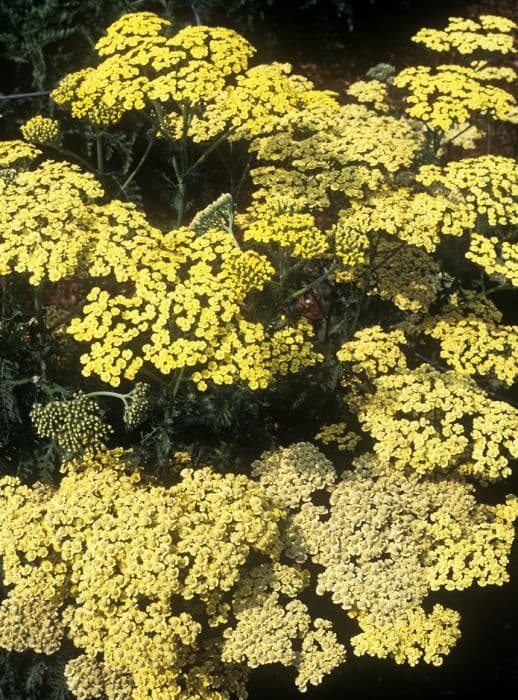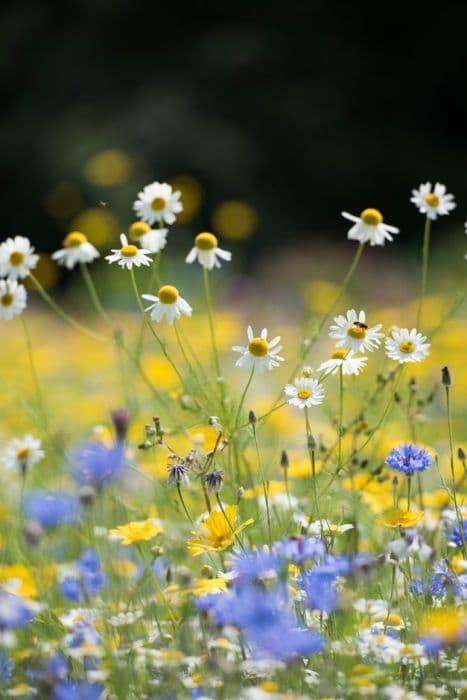Symphyotrichum laeve 'Nightshade'

ABOUT
The 'Nightshade' is a captivating plant that exhibits a combination of striking features and a visual appeal that makes it quite noticeable in a garden setting. The leaves are typically smooth and possess a dark green tint, often with a hint of a purplish or bluish hue that adds to its visual interest. These leaves are narrow and lance-shaped, tapering elegantly towards the tips. The most striking aspect of the 'Nightshade' is its array of aster-like flowers. These blossoms are a rich, deep shade of purple or violet, a color that resembles the darkness of the night sky, which might contribute to its name. Each flower is composed of tiny, tubular disc florets clustered at the center and surrounded by a halo of slender, long ray florets that fan out from the center like rays of the sun. These petals have a somewhat velvety texture, which makes the flowers feel as spectacular as they look. As 'Nightshade' blooms, generally in late summer through to fall, the contrast between the dark foliage and the vibrant flowers creates a dynamic and alluring display. The flowering heads are usually clustered together at the ends of stems, creating a full and lush appearance. This plant is particularly beloved by butterflies and other pollinators, who are often seen fluttering about the blossoms, adding life and motion to the tranquil beauty of the 'Nightshade'. Its overall look adds an aesthetic charm to any garden setting, making it a favorite among gardeners who wish to inject a splash of deep color and elegance into their plantings.
About this plant
 Names
NamesFamily
Asteraceae.
Synonyms
Smooth Blue Aster, Smooth Aster.
Common names
Aster laevis, Lasallea laevis, Virgulus laevis
 Toxicity
ToxicityTo humans
The plant known as smooth blue aster (Symphyotrichum laeve 'Nightshade') is not typically considered toxic to humans. There is no widespread documentation suggesting that the smooth blue aster presents a risk of poisoning if ingested. However, as with any plant, individual reactions can vary, and it is generally advisable to avoid eating plants that are not known to be edible.
To pets
The smooth blue aster (Symphyotrichum laeve 'Nightshade') is also not regarded as toxic to pets. It does not contain known toxins that would pose a threat to the health of pets if they were to ingest it. However, as with any non-food plant, consumption by pets should be discouraged to prevent any potential digestive upset or unexpected allergic reactions.
 Characteristics
CharacteristicsLife cycle
Perennials
Foliage type
Deciduous
Color of leaves
Green
Flower color
Purple
Height
2-4 feet (0.6-1.2 meters)
Spread
1-3 feet (0.3-0.9 meters)
Plant type
Herb
Hardiness zones
3-8
Native area
North America
Benefits
 General Benefits
General Benefits- Attracts Pollinators: The Smooth Blue Aster attracts butterflies, bees, and other beneficial insects, aiding in pollination.
- Aesthetic Appeal: With its vibrant purple-to-violet flowers, the plant adds a splash of color to any garden in the late summer and fall.
- Drought Tolerance: Once established, it is relatively drought-tolerant, requiring minimal watering.
- Wildlife Habitat: It provides food and habitat for various species of wildlife, including birds and insects.
- Low Maintenance: Smooth Blue Aster is generally low maintenance, making it suitable for gardeners of all skill levels.
- Cold Hardy: It can endure cold climates, making it suitable for many temperate gardens.
- Versatility: It can be used in borders, wildflower gardens, or naturalized areas, offering versatility in landscaping.
- Soil Adaption: It adapts well to a range of soil types, though it prefers well-drained conditions.
- Resilient: Resistant to most pests and diseases, ensuring a healthy and robust plant with little intervention.
 Medical Properties
Medical PropertiesThis plant is not used for medical purposes.
 Air-purifying Qualities
Air-purifying QualitiesThis plant is not specifically known for air purifying qualities.
 Other Uses
Other Uses- Photography Prop: Smooth Blue Aster's stark contrast between its dark foliage and light blooms makes it a popular choice for photographers seeking a natural, dramatic backdrop.
- Art & Craft Material: The dried flowers and stems can be used in floral arrangements or as a natural material in crafting eco-friendly wreaths and ornaments.
- Educational Tool: In schools, Smooth Blue Aster can be used to teach students about pollination and the role of native plants in local ecosystems.
- Dye Production: The flowers and leaves may be used to create natural dyes for fabrics, offering hues in the range of blues and purples.
- Culinary Decoration: Edible petals of Smooth Blue Aster can be used to decorate cakes and pastries, adding a touch of elegance and color.
- Ink Making: Historically, plants like the Smooth Blue Aster have been used to make plant-based inks for writing and drawing.
- Perfumery: Though not commonly utilized, the subtle scent of the Smooth Blue Aster could be infused into oils or waters for use in homemade perfumes.
- Seasonal Celebrations: With its late blooming period, the flowers can be used in arrangements and decor for fall festivities and events.
- Bioindicator: Smooth Blue Aster can serve as a bioindicator species, helping to signal the health of an ecosystem, particularly in prairie restoration projects.
- Livestock Feed: While not a common use, some farmers might use the plant as a supplemental feed source for livestock due to its abundance in certain regions.
Interesting Facts
 Feng Shui
Feng ShuiThe Smooth Aster is not used in Feng Shui practice.
 Zodiac Sign Compitability
Zodiac Sign CompitabilityThe Smooth Aster is not used in astrology practice.
 Plant Symbolism
Plant Symbolism- Patience: Symphyotrichum laeve 'Nightshade', commonly known as Smooth Blue Aster, is a late bloomer in the fall and thus represents patience and the anticipation of things to come.
- Wisdom: The aster has been regarded as a symbol of wisdom due to its daisy-like appearance that resembles the star-like shape, which has traditionally been associated with enlightenment and guidance.
- Elegance: The Smooth Blue Aster, with its delicate and smooth petals, is often seen as a representation of elegance and daintiness.
- Love and Devotion: Giving asters can be a symbol of love and devotion, denoting a sense of faithfulness and a strong bond between people.
- Power of attraction: Asters are believed to hold a magical power of attraction, possibly due to their colorful and striking presence.
 Water
WaterThe Smooth Blue Aster should be watered regularly, especially during its first growing season to establish a deep, extensive root system. Once established, it is quite drought tolerant. Water the plant when the top inch of soil feels dry to the touch, which might be approximately every week during periods of low rainfall. Provide a thorough soaking, ensuring water reaches the deeper root zone. A general rule is to provide about 1 gallon of water per plant each time you water, adjusting as necessary for your soil conditions and climate.
 Light
LightThe Smooth Blue Aster thrives in full sun to partial shade. The best spot for planting is an area that receives at least 6 hours of direct sunlight each day, though it can tolerate light shade. Avoid deeply shaded areas as this can reduce the plant's vigor and flower production.
 Temperature
TemperatureThe Smooth Blue Aster is a hardy plant and can tolerate a wide range of temperatures but will grow best when the temperature is between 60 to 75 degrees Fahrenheit. It can survive minimum temperatures down to at least -20 degrees Fahrenheit and shouldn't be exposed to temperatures above 90 degrees Fahrenheit for optimal growth.
 Pruning
PruningPruning Smooth Blue Aster involves deadheading spent flowers to encourage reblooming, as well as cutting back the plant in late fall or early spring. The best time to prune for shaping is in the spring, just as new shoots appear. You can also prune it back by about half in early summer to encourage a bushier growth habit and prevent flopping. Prune periodically throughout the blooming season to maintain plant health and appearance.
 Cleaning
CleaningAs needed
 Soil
SoilThe Smooth Blue Aster prefers well-draining soil rich in organic matter with a neutral to slightly acidic pH of 6.0 to 7.0. The best soil mix can be made by combining garden soil, compost, and perlite or sand to improve drainage.
 Repotting
RepottingSmooth Blue Asters should be repotted every 2-3 years or when the root system outgrows the current container, ideally during spring.
 Humidity & Misting
Humidity & MistingSmooth Blue Asters are adaptable but thrive best in average humidity conditions; they do not require high humidity environments.
 Suitable locations
Suitable locationsIndoor
Ensure bright indirect light and good air circulation for indoor growth.
Outdoor
Plant in sunny spot with well-draining soil and spacing for airflow.
Hardiness zone
3-8 USDA
 Life cycle
Life cycleThe life of Symphyotrichum laeve 'Nightshade', commonly known as Smooth Blue Aster, begins with seed germination, typically in early to mid-spring, when temperatures warm and moisture is adequate. Following germination, seedlings establish a small rosette of leaves at the soil surface and develop a root system. As the growing season progresses, the plant enters a vegetative growth stage, with stems elongating and foliage expanding to form a bushy structure. During late summer to fall, the Smooth Blue Aster enters the flowering stage, producing clusters of daisy-like flowers with purple to violet-blue petals and yellow centers that attract a variety of pollinators. After pollination, the flowers develop into seed heads, with seeds dispersed by wind or wildlife, completing the reproductive cycle. In winter, the above-ground growth of perennial asters dies back, but the plant survives below ground through its root system to re-emerge the following spring.
 Propogation
PropogationPropogation time
Late summer
The Smooth Blue Aster, known botanically as Symphyotrichum laeve 'Nightshade', is best propagated through division, which is typically done in the spring. To propagate by division, carefully dig up the parent plant, ensuring a substantial root ball is intact. Then, using a sharp spade or knife, divide the plant into smaller sections, each with a portion of the root system and several shoots. These divisions should then be immediately replanted in well-prepared soil, maintaining the same depth at which the parent plant was growing. Water the new plants thoroughly to establish them, providing about 1 inch (2.54 cm or 25.4 mm) of water per week during their first growing season.









